Korean Dancer in Pink Room With Blue Chairs
A look at the cultural customs that shape Korean weddings.
When it comes to personalizing your wedding, choosing to incorporate nods to your heritage is a great idea. For Korean couples, and for guests who are invited to Korean weddings, there are some distinct traditions and rituals that set Korean nuptials apart. From bright colors to the inclusion of chestnuts, there are many meaningful Korean wedding traditions that you can expect to see at a Korean wedding. To help highlight some of the most common customs, we tapped a few industry pros to offer their insight and advice. Below, Bo Shim of Bashful Captures and Sheena Kim of Unique Lapin Photography open up about everything you need to know when it comes to Korean wedding traditions.
In This Story:
- 1. Symbolic Attire
- 2. Meaningful Colors
- 3. Betrothal Gifts
- 4. Processional Parade
- 5. A Wild Goose
- 6. Respectful Bowing
- 7. Gourd of Wine
- 8. Pye-baek
- 9. Noodle Banquet
1. Symbolic Attire
"In Korean wedding ceremonies, the significance of attire is important," explains Shim. "The couple both wear a Korean traditional outfit called Hanbok. The bride has to wear a red Hanbok and the groom has to be in a blue Hanbok. The color represents the balance of the energy between the two. Red dots also get painted on the bride's cheeks as a symbol to protect from evil spirits."
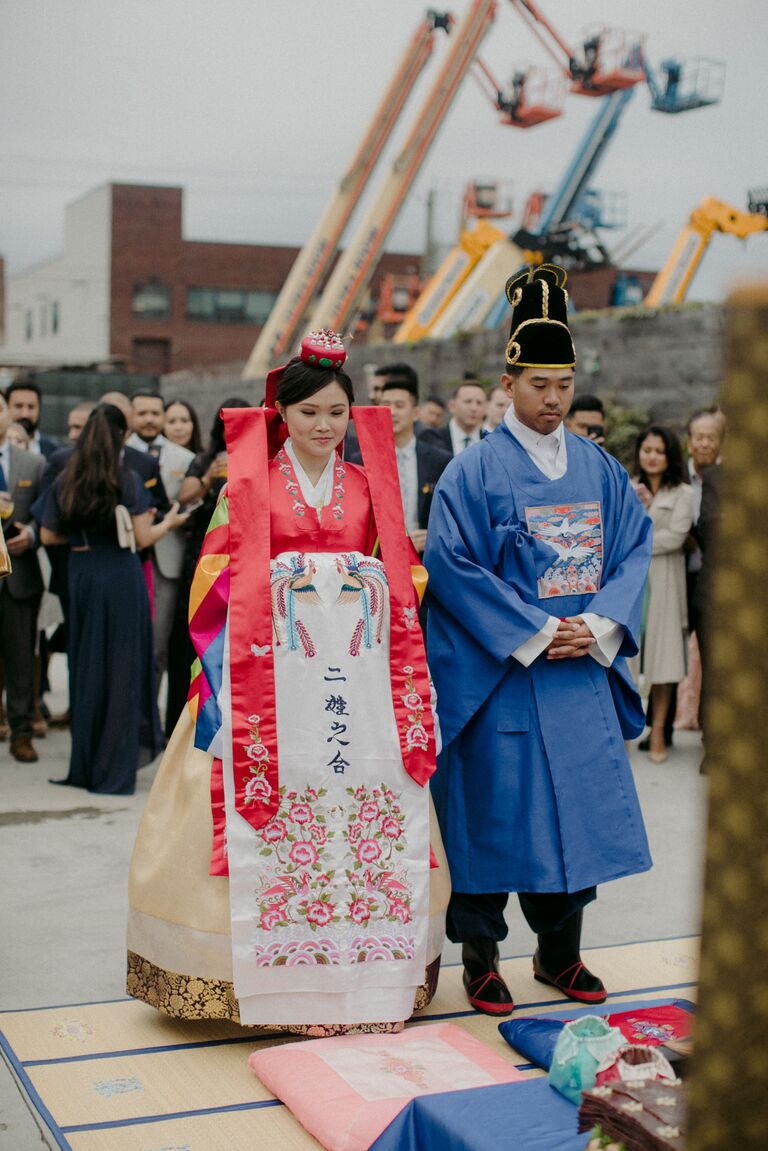
2. Meaningful Colors
Blue and red are two of the main colors seen in Korean weddings. Traditionally, the bride will wear red and the groom will wear blue. Additionally, "the bride and groom's mothers will also wear specific colors to symbolize their familial relationship with the bride and groom. The groom's mother will wear a light blue hanbok specifically and the bride's mother will wear pink or purple," notes Shim. "Since the mother-of-the-groom wears light blue or green and the mother-of-the-bride wears light pink or purple, guests should avoid wearing colors similar to those," adds Kim.
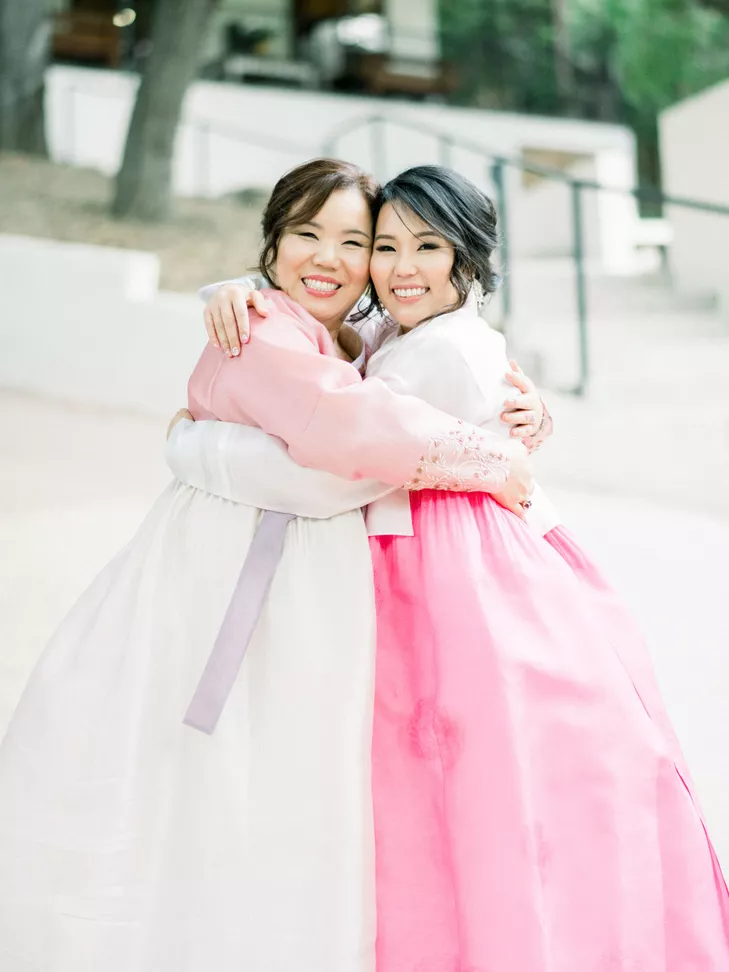
3. Betrothal Gifts
Historically, Korean betrothal gifts were brought to the bride's home by a band of the groom's closest friends. The gifts were placed in a box called a hahm. The group would arrive singing at the bride's family home and they would stop just outside the house, chanting, "Hahm for sale, hahm for sale!" The bride's family would rush out and offer money to the group. Through fun negotiation and laughter, the bearers would be bribed until at last the hahm was delivered.
"Hahm is when the groom's friends bring a box of jewels and gifts to the bride's house before the wedding. There's usually a fun negotiation between the bride's family and the groom's friends before Hahm is delivered," explains Shim. Kim concurs, sharing that "hahm is supposed to be a box full of gifts to the new bride. It will be something like jewelry, watches, cash, nice clothing and such. Giving hahm usually happens before the wedding. The groom's friends are supposed to carry these boxes to the bride's house and the bride's family is supposed to offer a gift to these gift-givers before retrieving them. It's a very festive and fun activity before the wedding as a long time ago they used to make the groom wear a dry squid mask during the process of the gift-giving to the friends that help deliver the hahm boxes."
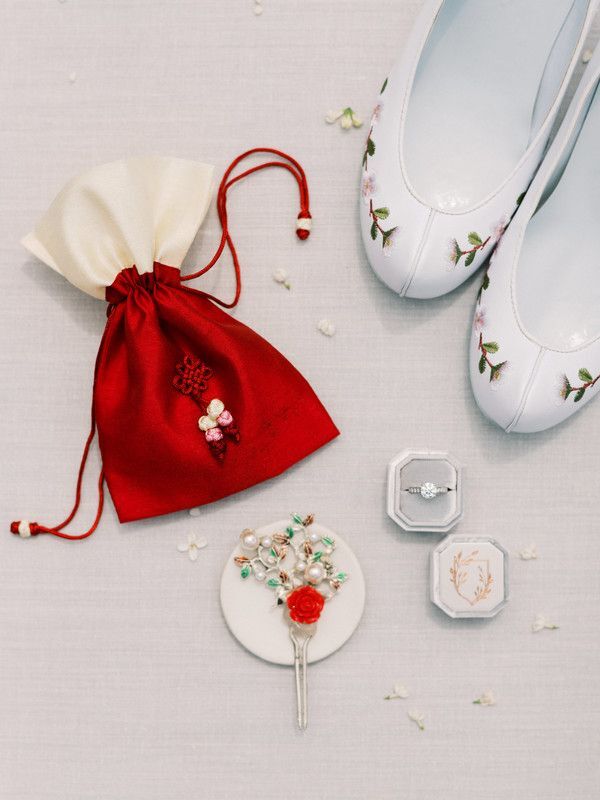
4. Processional Parade
To kick off a Korean wedding ceremony traditional music is played. While, historically, the groom would ride to the bride's home by horse, modern Korean weddings now generally begin with the officiant entering and guiding everyone through the ceremonial sequence of events. As part of the processional parade, both mothers will walk in holding candles. "The ceremony begins when both moms enter and light a candle together and take a seat in the first row together," explains Kim. The mother of the bride traditionally carried a red candle and the mother of the groom enters carrying a blue candle. Once the two mothers make their way to the end of the processional, together they light a single candle to symbolize the beginning of the wedding ceremony. Kim notes that family members are an especially important part of Korean weddings as "Korean weddings are not just about the couple or two people coming together. In Korea, it's more about the two families becoming one."
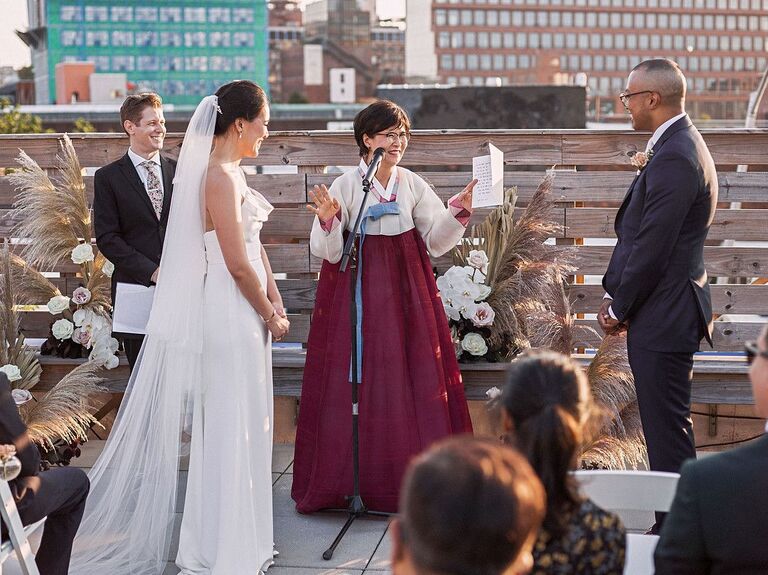
5. A Wild Goose
Before the wedding, a beautiful tradition known as jeonan-rye takes place. As part of jeon-an-rye, the groom gives the bride's mother a wild goose (traditionally, a live goose was used; today it is often a wooden goose known as won-ang seteu). Wild geese mate for life, so his gift is a promise that he will care for her daughter for life.
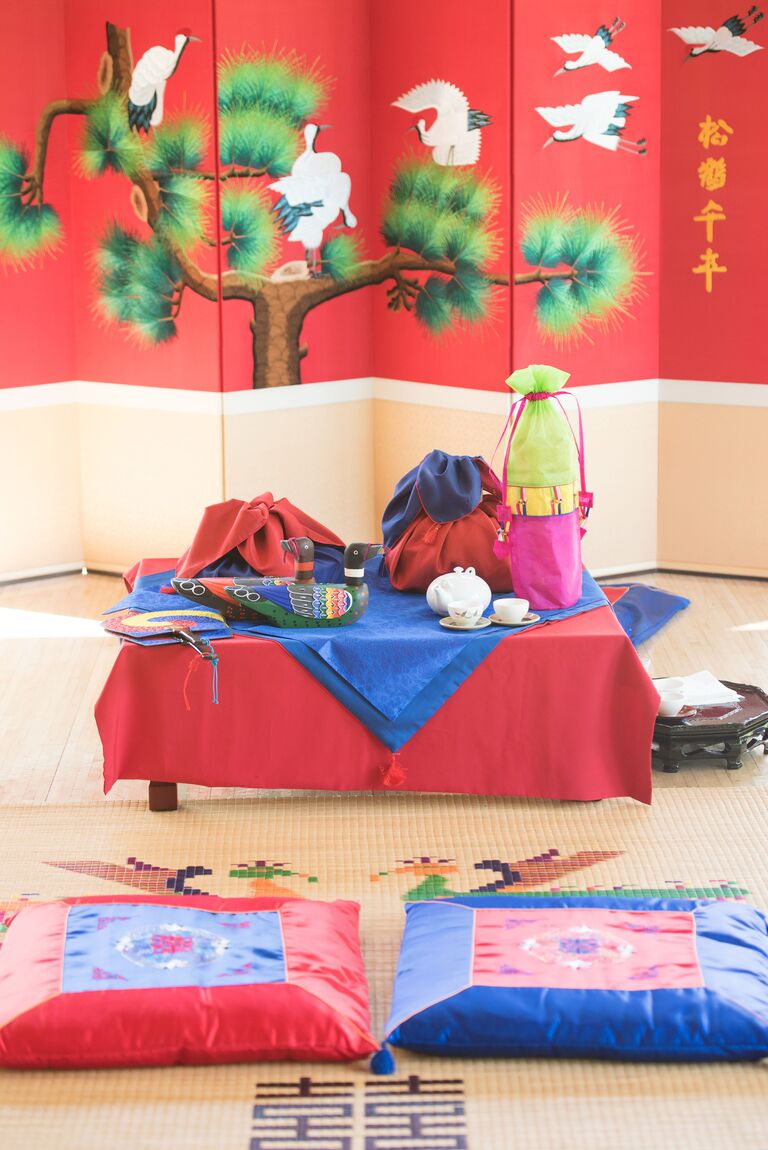
"Wild geese mate for life, so as a symbol, a pair of wild geese are brought from the groom as a promise that he will take care of the bride for life," adds Shim. "Before presenting the goose the groom is supposed to bow twice to the mother-in-law as it represents the lifelong promise to his mother-in-law and his lifetime commitment to her daughter," adds Kim. "You can generally find these wood geese on display at the newlywed's home to symbolize their faithfulness for each other and inviolable vows."
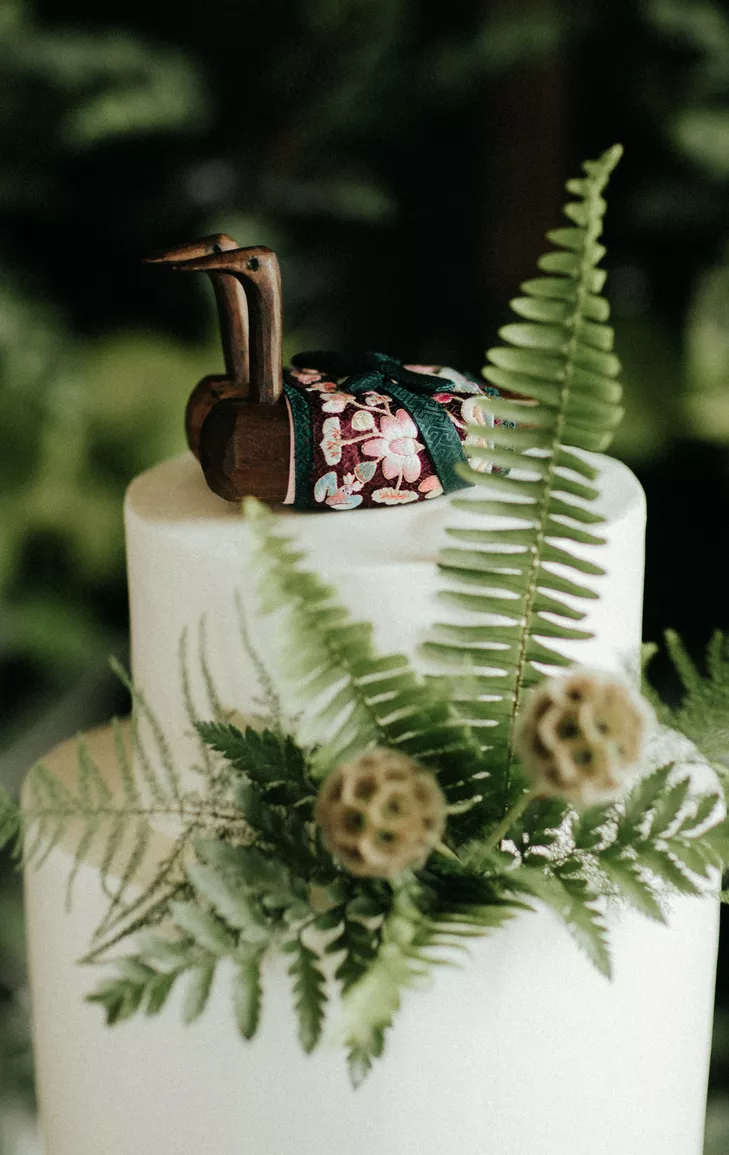
6. Respectful Bowing
To show their commitment to each other, the couple ceremonially bows during a part of the wedding ceremony known as gyo-bae-rye. Later, the couple will bow toward their parents during seong-hon-rye as a declaration of their marriage.
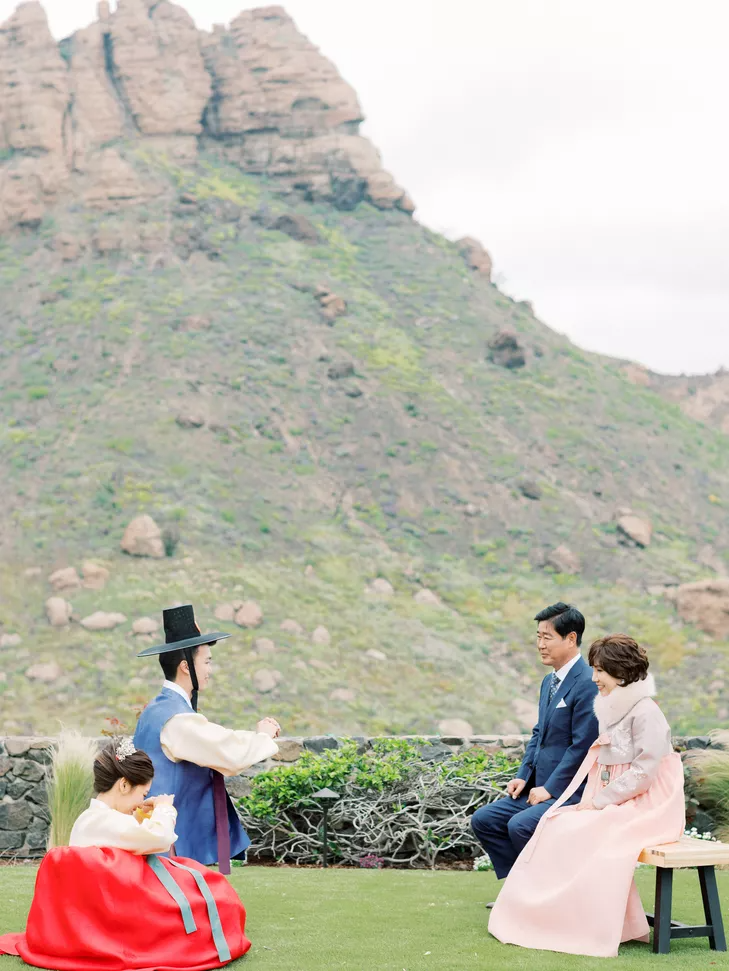
7. Gourd of Wine
After bowing toward each other, but before bowing to their parents, the couple historically sealed their marriage vows by sipping a special wine poured into a gourd grown by the bride's mother during a tradition known as hap-geun-rye.
"The highlight of the ceremony is when the couple share jung jong (Korean wine) together. The bride and groom sip the wine from their separate cups and then the wine is mixed together, poured once more into the cups and it's sipped again. This is their wedding vow, the kunbere," explains Shim.
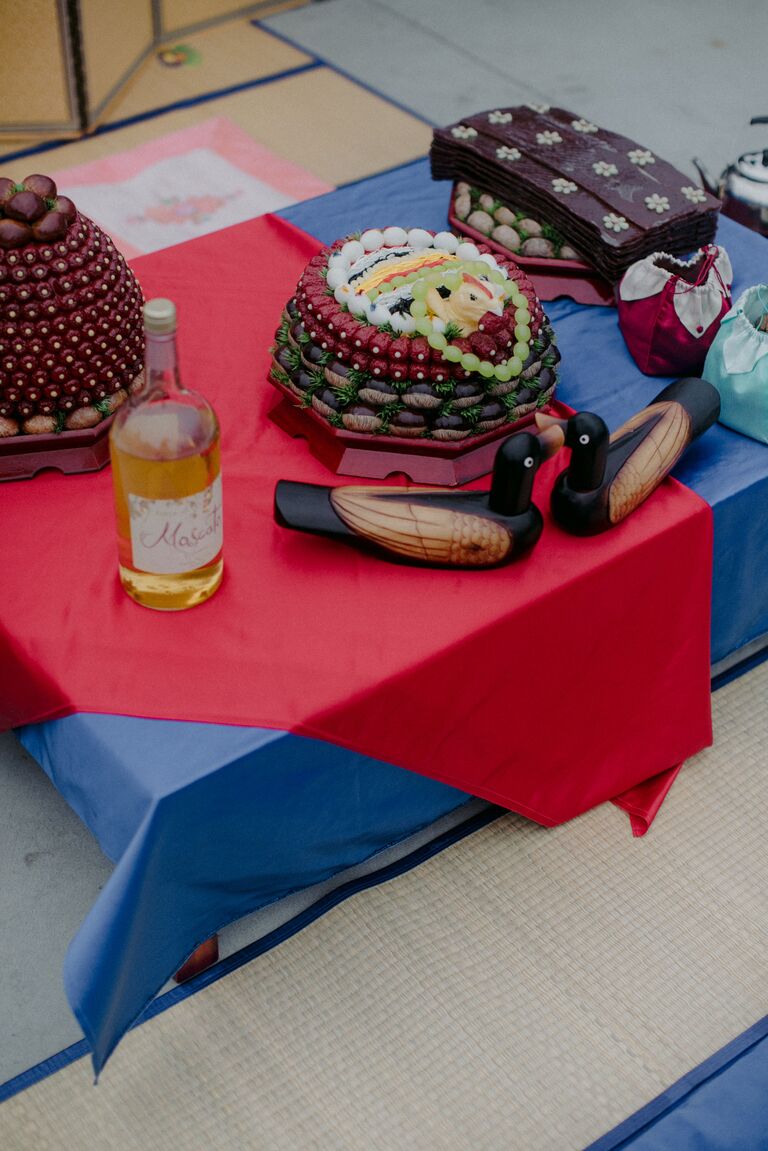
8. Pye-baek
The pye-baek is the part of a Korean wedding that follows the vows, or the kunbere part of the wedding. During pye-baek, chestnut and dates, known as jujube, which symbolizes future children, are exchanged.
Historically, the pye-baek took place a few days after the ceremony. The couple would visit the groom's family for another wedding ceremony, the pye-baek. Here the bride offered dates and chestnuts to the groom's parents, while sitting at a low table filled with other symbolic offerings. The parents offered sake in return, and as a final gesture, they threw the dates and chestnuts at the bride, who tried to catch them in her large wedding skirt.
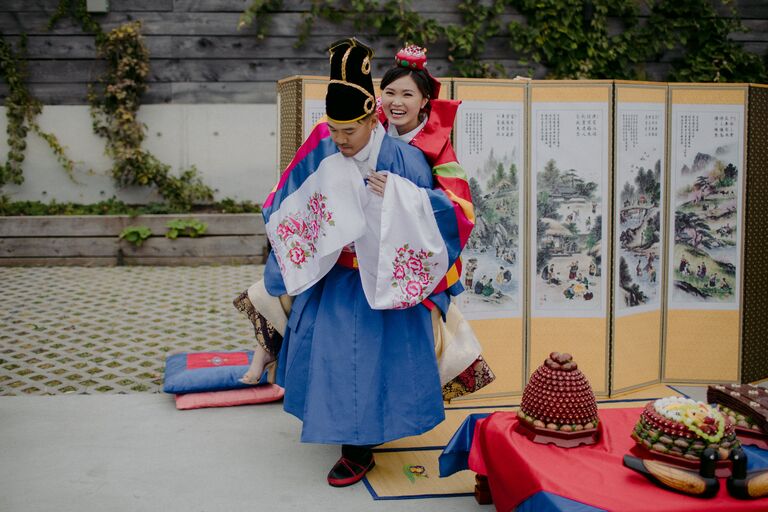
In the United States, the pye-baek is most often held at the reception, with the bride and groom in full Korean attire. It is usually a family-only affair, hosted by the groom's side. The throwing of dates and chestnuts is the highlight. Family members also offer gifts of money in white envelopes to the bride. Beyond family gifting the couple money in white envelopes, this is something guests should do as well, explains Kim. "When attending a Korean wedding, bring cash as gifts in white envelopes," she advises.
"Modern Korean weddings now incorporate pye-baek as part of entertainment in westernized weddings, where both families are there to enjoy the ceremony usually during cocktail hour. However, pye-baek traditionally is a post-wedding ceremony to introduce the bride to the groom's side of the family as a permanent member of the family. Therefore, only the groom's family is allowed to be present," explains Shim. While generally, only the groom's family is present, Kim notes that in some modern Korean weddings all are invited to partake.
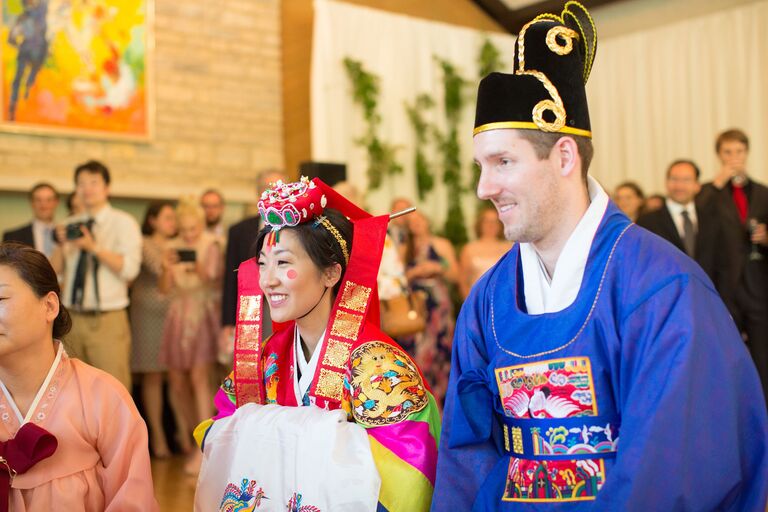
Kim goes on to elaborate that the pye-baek is a "post-ceremony tradition that is actually very fun and gives everyone a good laugh. But most importantly it is a way for the groom to introduce his new wife to his older family members. During pye-baek, the parents sit behind a table where there are nine foods, each representing fullness and the bridal couple's lifelong union. The couple pays their respects by deep bowing and they get served tea or soju followed by being offered advice and blessings. Then the parents throw dates and chestnuts and the couple tries to catch as many as possible with a cloth that is part of the bride's outfit. Dates represent future sons and chestnut represent daughters."
"One of the fun parts of this is the couple share one date together and whoever is left with the seed is supposed to be the 'one in power in the relationship.' At the end the groom will give his bride a piggyback ride as it is supposed to signify the groom's ability to support his wife, literally and figuratively," adds Kim.
9. Noodle Banquet
Korean wedding banquets can be very simple: Noodle soup is the only required dish. In fact, the wedding banquet is called kook-soo-sang, which means "noodle banquet." Long noodles, symbolizing a wish for a long and happy life, are boiled in beef broth and garnished with vegetables. Dok, a sticky rice cake, is served at most Korean events, especially weddings.
"Kook soo means noodles in Korean. Traditionally, noodles get served at weddings, which represent a long and happy marriage," shares Shim. "Kook soo sang is served at every Korean wedding as noodles symbolize a long and happy life together," adds Kim. "Usually a clear beef broth is garnished with vegetables and shredded eggs."
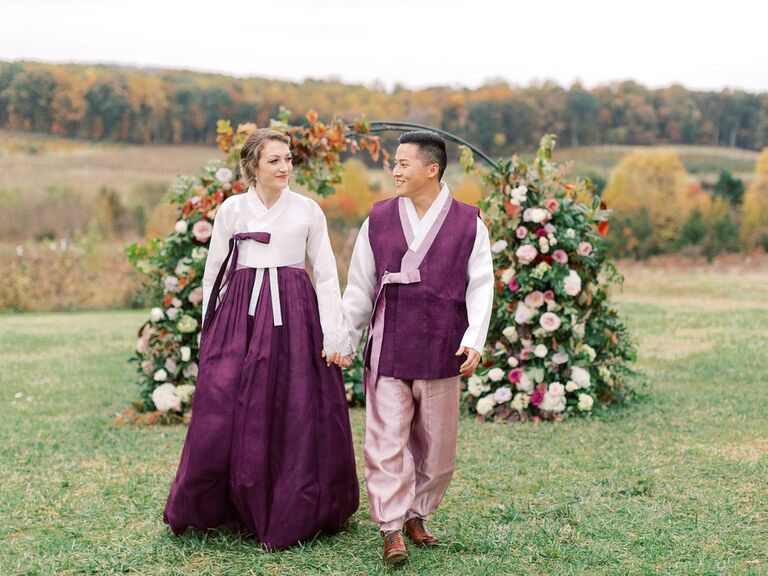
References:
- Wild Geese and Tea, An Asian-American Wedding Planner by Shu Shu Costa (Riverhead Books, 1997)
hetheringtonvinten40.blogspot.com
Source: https://www.theknot.com/content/korean-wedding-traditions
0 Response to "Korean Dancer in Pink Room With Blue Chairs"
Post a Comment